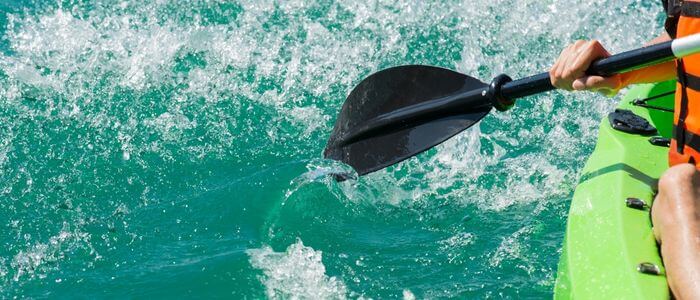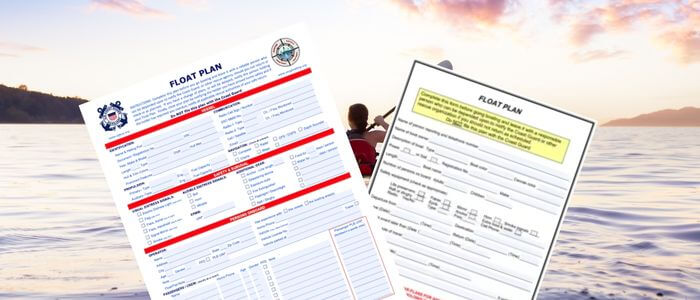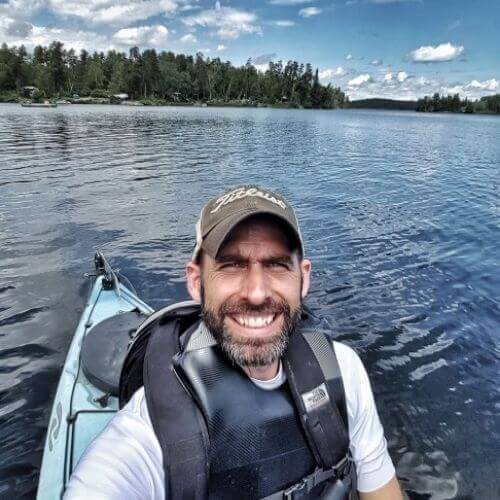
Have you ever been on a kayaking trip and had no idea what to do if something went wrong? What if you were out on the river, injured, and couldn’t get back to shore? If you don’t have a float plan, these are exactly the situations that can happen. So now you must be thinking, what is a float plan?
Well, a float plan is simply a document that outlines your intended route and contact information for someone who should be alerted if you don’t return home on time.
It’s an important piece of safety gear for any kayaker, and today we’re going to talk about what it is, why it’s so important and how to create one.
Let’s get started!

A Float Plan is simply a written plan that details where you are going boating, who is going with you, what type of boat you are using, and what emergency equipment and supplies you have on board. Having a Float Plan is important because it helps ensure that someone knows your whereabouts in an emergency. It can also be helpful if your boat should become disabled while you are out on the water.
Many different elements can be included in a Float Plan, but at a minimum, it should include the following information:
It is also a good idea to include as much details as possible about the boat itself, such as its capacity, any special features or equipment on board, and what fuel it uses.
If you have any health concerns or allergies that could pose a problem while out on the water, be sure to include this information. By creating a detailed Float Plan before heading out onto the water, you can help ensure a safe and enjoyable trip for everyone involved.
Yes, you need a Float Plan, even if you’re taking a quick paddle around the lake. It’s always better to be safe than sorry, and a Float Plan can help ensure that someone knows your whereabouts in an emergency.
If you’re planning on paddling in unfamiliar waters or going on a longer trip, it’s especially important to have a Float Plan.
Following are the top 5 reasons that make it necessary to have a float plan while you are out on the water.
The first and most important reason to have a float plan is that it will help you cover a long distance without discomfort. If you are going on a kayaking trip, you must be aware that there are chances you might get lost in the middle of the sea or ocean.
In such a scenario, having a float plan can be helpful as it will give you an idea about the route and provide you with emergency contacts.
Another reason to have a float plan is that it will instantly give you access to emergency services. If you are out on the water and something goes wrong, your loved ones can call the emergency services, and they will be able to reach you quickly.
Float plans also give you peace of mind. When you are out on the water, many things can go wrong. However, if you have a float plan, you will be prepared for anything and will not have to worry about being stranded in the middle of nowhere.
Another reason to have a float plan is that it gives you the confidence to take on challenging situations. If you know that you have a float plan and are safe, you will be more likely to try new things and explore new areas.
The last reason to have a float plan is that it enables you to share information with others. If you are going on a kayaking trip with someone else, they will also be able to see your float plan, which will help them be prepared in an emergency.
Now that you know the importance of having a float plan, you should ensure that you always have one before heading out onto the water. By taking the time to create a float plan, you can help to ensure a safe and enjoyable trip for everyone involved.
Now that we’ve discussed a float plan and why it’s so important, let’s discuss how to create one.
Creating a Float Plan is easy and only takes a few minutes. But it could save your life, so it’s definitely worth the effort.
Here’s what you need to do:
Creating a Float Plan is easy and only takes a few minutes. But it could save your life, so it’s definitely worth the effort!
As a kayaker, one of the most important things you can do is create a float plan. A float plan is simply a document that outlines your plans for a day or multi-day trip on the water. It details where you’re going, when you’ll be back, who you’re going with, and how to reach you in an emergency.
Float plans are essential for kayakers of all skill levels and experience, as they help to keep you safe on the water.
So, what exactly should be included in your float plan?
Creating a float plan may seem like extra work, but it’s always better to be safe than sorry. So before heading out on your next boating adventure, take some time to sit down and create a comprehensive float plan. Your future self will thank you for it!
Float plans are simple to create and take a few minutes to complete. However, they can be essential in helping rescuers locate you if something goes wrong. Here are a few tips for creating a float plan:
Following these simple tips ensures that your day on the water is safe and enjoyable.
A float plan is a simple but essential document that every kayaker should have. It helps keep you safe on the water by providing rescuers with important information in an emergency.
So, by going through this article, you must have learned everything, including what is a float plan, how to create one, and the reasons behind creating a float plan while going on a kayaking trip.
We hope this article was helpful and informative and will inspire you to create a float plan of your own.
Remember, it’s always better to be safe than sorry!

Hey there kayak lovers! I’m Jay Schwartz, the author here at Kayak Guidance! You know water sports – you know me! My life is all about it. Kayaking, Paddleboarding, Fishing, Snorkeling and so much more. I love to share my passion and knowledge with all of you.

Hey there kayak lovers! I’m Jay Schwartz, the author here at Kayak Guidance! You know water sports – you know me! My life is all about it. Kayaking, Paddleboarding, Fishing, Snorkeling and so much more. I love to share my passion and knowledge with all of you.

Welcome to KayakGuidance.com! If you’re looking to have some fun outdoor water adventures, then you have come to the right place. We help our readers find the best kayaks and water related equipment to help you have the best time of your life whenever you are engaging in water activities.
This site is a participant in the Amazon services LLC associates program, an affiliate advertising program designed to provide a means for sites to earn advertising fees by advertising and linking to Amazon.com.